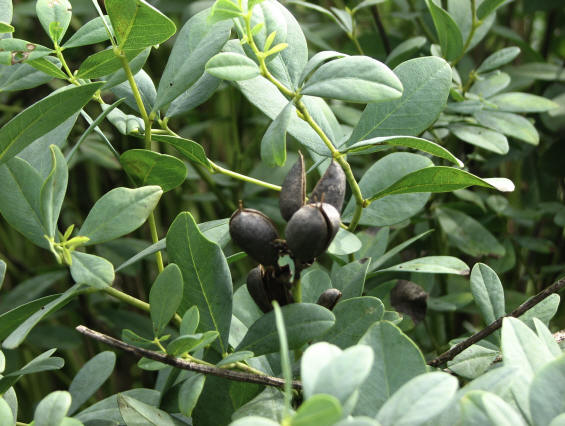|
Baptisia
Pam Van Pelt
Adams County Master Gardener
 This year was a challenging year for gardeners. We had a very wet spring following by little to no rain in the months
of June and July and then massive amounts of rain starting in August and continuing even as I write this article. The one plant that seemed unaffected by it all was baptisia. While my other flowers struggled during the 100+
degree days of July, the baptisia thrived. Not many plants could survive so much rain early in the year, no rain for two months during some of the hottest weather we have ever had and still look good after weeks and weeks of
rain and little sun. This year was a challenging year for gardeners. We had a very wet spring following by little to no rain in the months
of June and July and then massive amounts of rain starting in August and continuing even as I write this article. The one plant that seemed unaffected by it all was baptisia. While my other flowers struggled during the 100+
degree days of July, the baptisia thrived. Not many plants could survive so much rain early in the year, no rain for two months during some of the hottest weather we have ever had and still look good after weeks and weeks of
rain and little sun.
Baptisia is derived from the Greek word 'bapto' which means to dip or dye. Other common names for this plant are blue false indigo, wild indigo, indigo weed, rattleweed and rattlebrush. The
Cherokee Indians used the plant to make a blue dye and the Early American settlers copied this practice. They referred to it as false indigo, a much less expensive and more readily available alternative to true indigo from
the West Indies. Baptisia australis with its lovely blue flowers was the first agricultural crop ever to be subsidized in America. Although the plant is toxic, it was used by the Cherokee to make medicinal teas and the Osage
used it to make eyewash. It's currently being studied for its ability to stimulate the immune system.
In the Spring, baptisa sends up asparagus - like shoots and eventually forms a beautiful vase -shaped shrub. In May or June, they develop lovely blue flowers that look like lupines. The
beautiful sweet pea- like flowers last for about three weeks and attract butterflies, bees, and hummingbirds. When the flowers fade away, the lovely clover- shaped blue- green leaves remain neat and form a great backdrop for
other perennials in the garden. If left untrimmed, the plant forms inflated hardened black pods that rattle with seeds when the wind blows. You can cut it down by half after it has flowered if you want to keep it smaller,
but you miss out on the seed pods which are great to use in dried flower arrangements.

Being a member of the pea family, a legume, it can fix nitrogen in the soil. This long -lived plant is not susceptible to pest damage or disease and is hardy in zones 3 through 9. Baptisia is
native to the prairies of North America and being native to our area helps it grow and thrive with little care. It's best to plant your baptisia in spring. This will give it time to establish roots before winter. Once
planted, it should be left alone as it develops a deep taproot that is easily damaged if you try to transplant it. As with many perennials, it does not reach its full potential for three to five years. It spreads by
underground rhizomes or seed to a width of 3 to 4 feet so give it plenty of space. If the seed pods are left over winter, it will produce little seedlings but they are easy to pull out.
Unlike many perennials, baptisia does not require regular division to keep it looking good. It will form a dense clump but given adequate space when planted, it does not become a nuisance.
Baptisia is rarely bothered by deer as they consider it unpalatable. The plant thrives in full sun, and although it will grow in some shade, the plant tends to become leggy and may require staking.
Baptisia australis was just named Perennial Plant Association's 2010 Perennial of the year. The Perennial Plant Association is a horticultural trade organization that chooses a perennial
plant winner every year. The criteria for choosing the Perennial of the Year is based upon low maintenance, adaptability to a wide range of climates, pest and disease resistance, wide availability, multiple seasons of
interest and ease of propagation. You can be assured that any of the Perennial of the Year award winners will be great in your garden. My garden contains Walker's Low Catmint (2007 winner), Dianthus 'Firewitch' (2006
winner), Phlox 'David" (2002 winner), 'Karl Foerster' Feather Reed Grass (2001 winner), 'Magnus" Purple coneflower (1998 winner), Salvia "May Night" (1997 winner), Penstemon 'Husker Red' (1996 winner), and Heuchera 'Purple
Palace' (1991 winner). All are star performers in my garden, and I highly recommend choosing any of the past winners. If you are looking for a great all around perennial, give this one a try. You won't be disappointed.
Read other articles on ecological gardening & native plants
Read other article by Pam Van Pelt
|